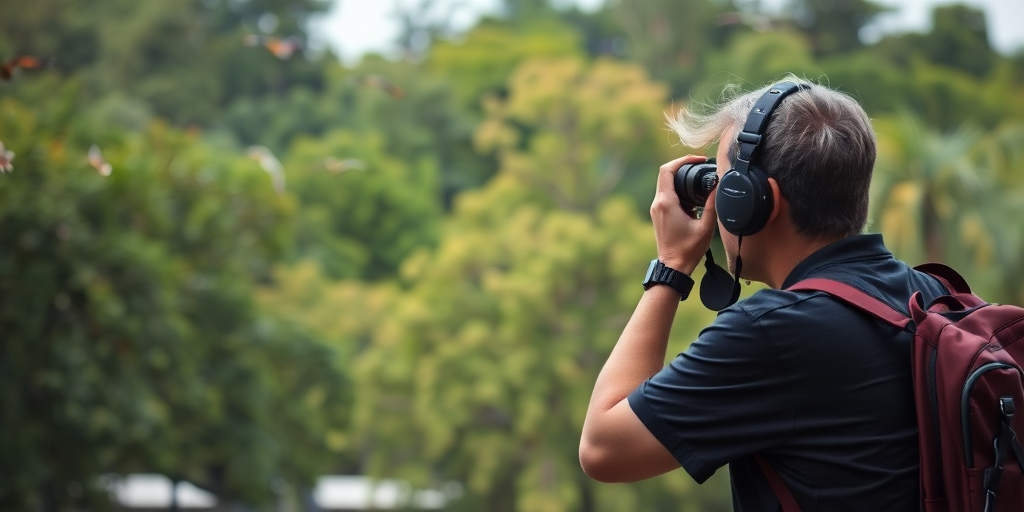Does your birdwatching technique respect the natural balance of the environment? Experts at Birdsmania stress that minor deviations can disturb delicate avian habitats, ultimately affecting conservation efforts. A structured code of conduct guides enthusiasts to observe and appreciate birds without interfering with their natural behavior. Recognizing these standards is crucial for maintaining sustainable observation practices that benefit both bird populations and avid birders. This comprehensive guide outlines the core do’s and don’ts, empowering enthusiasts to engage respectfully and confidently with their natural surroundings.
Birdwatching Etiquette: Do’s for Ethical and Immersive Birding Experiences
Ethical birdwatching elevates the observation experience and preserves delicate ecosystems. Observers are encouraged to adopt practices that foster minimal interference and advance conservation efforts. Adhering to these standards cultivates an environment in which both bird populations and enthusiasts can thrive without disturbance or undue stress on natural behaviors.
Best practices during a birdwatching session revolve around maintaining silence, steady focus, and a respectful distance from the wildlife. Observers should consistently use tools that assist in viewing without encroaching on the natural habitat. This measured approach helps minimize any unintended influence on birds’ routine activities and supports ongoing conservation initiatives.
- Use binoculars or spotting scopes
- Maintain a respectful distance
- Stay quiet and minimize movement
- Follow marked trails and designated paths
- Respect sensitive breeding sites
- Use nonintrusive photography practices
Adopting these do’s not only enhances the observer’s personal experience but also contributes to the broader welfare of the ecosystem. Respectful practices promote accurate field observations and underline the importance of balancing human curiosity with nature’s need for stability. By focusing on ethical and mindful behavior, birdwatchers support habitat preservation and ensure that future generations can appreciate avian life in settings that remain undisturbed.
Birdwatching Etiquette: Combining Safety, Respect, and Conservation in the Field

Birdwatchers participating in group excursions must adhere to fundamental safety protocols and organized community practices. Observers should wear protective clothing, communicate clearly to announce their presence, and remain alert to potential hazards in natural environments. Group dynamics foster an atmosphere in which veteran birders mentor newcomers, promoting calm behavior that minimizes disturbances and prevents accidents during field activities.
Using optical devices responsibly and moving silently are crucial for ethical field observations. Observers are advised to:
- Maintain appropriate distances
- Use silent signals
- Follow local wildlife regulations
These techniques guarantee that equipment is utilized with minimal interruption to natural behaviors while preserving habitat integrity and reducing stress on local wildlife.
Conservation remains a core tenet when engaging in outdoor birding. All participants must commit to respectful observation that protects local ecosystems. Prioritizing natural habitat stability supports both scientific study and community-based conservation initiatives. This approach, combining attention to safety, thoughtful equipment use, and proactive environmental care, reinforces responsible birdwatching throughout shared outdoor experiences. This integrated framework empowers individuals to respect both wildlife welfare and community values in every birdwatching endeavor. Passion for nature and strict safety guides dedicated observers consistently.
Final Words
In the action of birdwatching, the article explored basic etiquette and responsible field practices.
Practical guidance on respectful observation, equipment use, and conservation emerges through clear do’s and don’ts.
Insights on preserving natural habitats and abiding by legal obligations foster both safety and environmental commitment.
Each segment underscores core principles of Birdwatching Etiquette: Do’s and Don’ts.
Constructive steps advance enriching experiences in the field, promoting a positive outlook on both bird engagement and habitat protection.
FAQ
What are the 5 S’s of birding?
A: The 5 S’s of birding are Size, Shape, Silhouette, Sound, and Surroundings. These characteristics help identify birds accurately during observation sessions.
What colors should birdwatchers avoid wearing?
A: Birdwatchers should avoid bright colors and white. Earth tones, olive green, brown, and gray are optimal choices that blend with natural surroundings.
What are the core ethics of bird watching?
A: Bird watching ethics center on maintaining distance, staying quiet, following designated paths, respecting breeding sites, and never disturbing natural habitats or removing objects.
How should birdwatchers maintain proper distance from birds?
A: Birdwatchers should use binoculars or spotting scopes to observe from a distance that doesn’t alter bird behavior or cause them to fly away.
What equipment is essential for ethical bird watching?
A: Essential equipment includes binoculars, field guides, earth-toned clothing, and a camera without flash. These tools support proper observation without disturbing birds.
Are bird calls or recordings permitted during observation?
A: Bird calls and recordings should be minimized, particularly during breeding seasons. Silent observation is the standard practice for ethical bird watching.
What are the guidelines for bird photography?
A: Bird photography requires using long lenses, avoiding flash, maintaining distance, and never manipulating the environment or baiting birds for shots.


